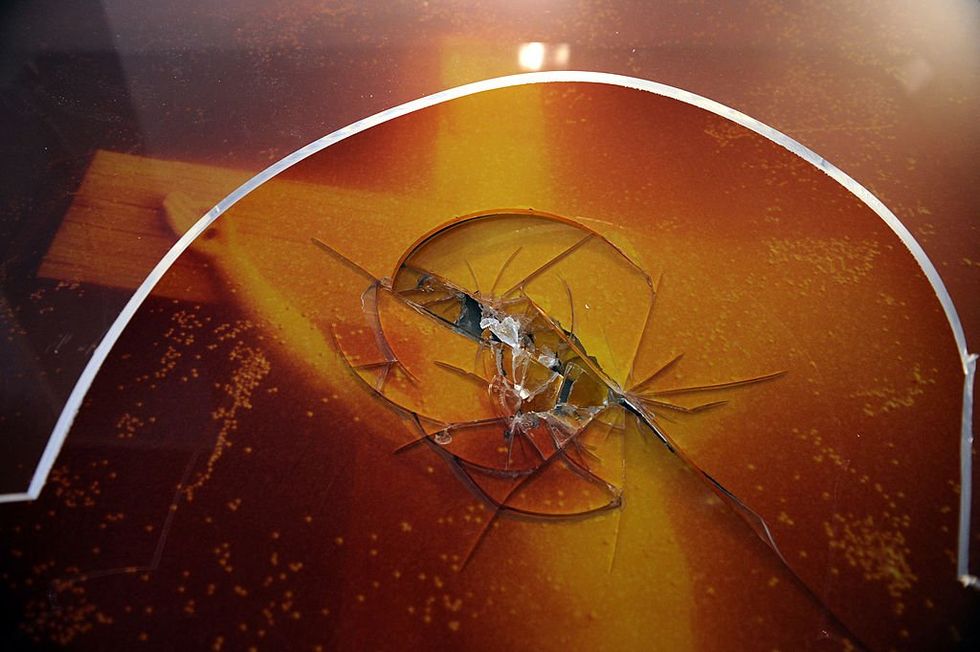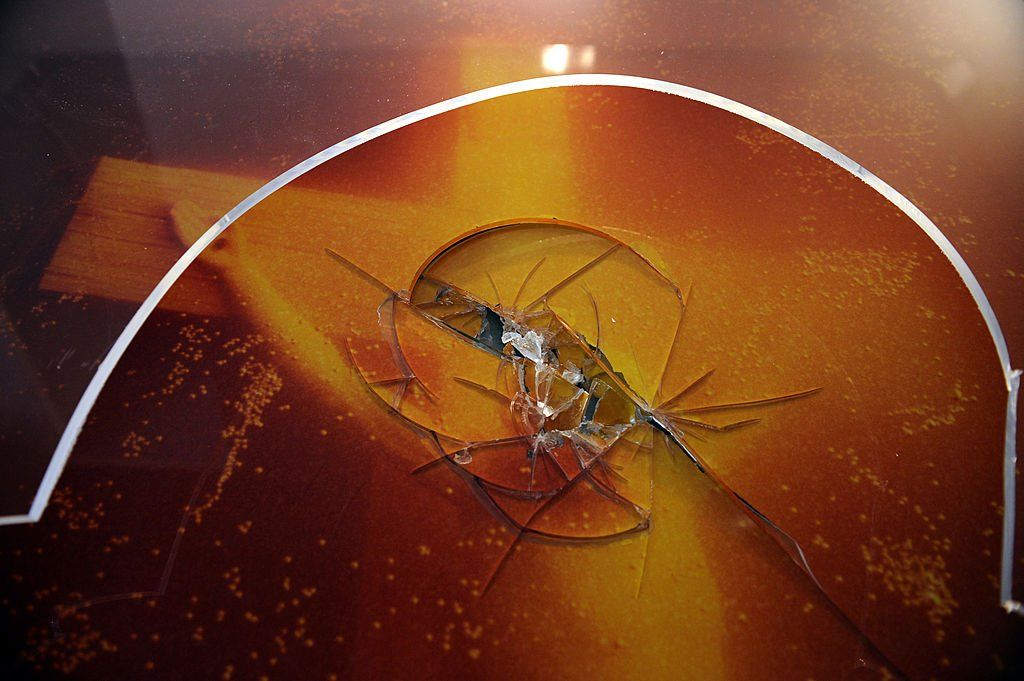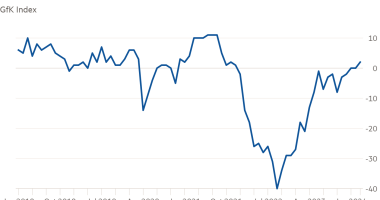Liberals and conservatives typically differ in many of their psychological characteristics, personal predilections, and life choices, but few of these differences stand out to me as starkly as this one: Conservatives’ taste may be generally … conservative, but at least they tend to be fond of beauty and beautiful things. Liberals tend to resent beauty, often to the point of knee-jerk iconoclasm. They have a soft spot for the hideous in every aspect of life.
One way of getting at the issue is to consider the way liberals commonly deform and desecrate their own bodies. They go around sporting unsightly piercings, body modifications, and bizarre hairstyles or hair dyed all sorts of stupid colors, and they wear vulgar clothes that display body parts, unsightly flab notwithstanding, that really should stay covered for the sake of all concerned. True, they typically start out less attractive than conservatives, but then they do themselves no favors by leaning into their God-given deficits instead of working to ameliorate them.
Conservatives tend to focus on higher things, while the liberal gaze always finds a way of wandering downward.
But this goes far beyond bodies. As research has revealed, conservatives tend to dislike things that are disgusting, and so when presented with images of blood, feces, or vomit, they are quicker than liberals to look away. Such results track with New York University psychologist Jonathan Haidt’s “moral foundations” research showing that conservatives have, among other things, a far more developed sense of purity/sanctity/degradation, strongly rooted in disgust motivated by an evolutionarily advantageous avoidance of pathogens.
In short, conservatives simply have a more robust instinct to recoil than liberals do when confronted with ugliness in their midst.
Research has also repeatedly shown that conservatives prefer less busy, more realistic art, while liberals prefer work that is more complex and abstract. Conservatives, in other words, have a preference for art and architecture that is more traditional and classical. Whatever else one might want to say about such art, it is surely more universally thought to be conventionally “beautiful.”
While I personally enjoy much 20th-century art, music, and literature — many of my very favorite works of prose and poetry in particular fall into the category of high modernism — surely “The Iliad,” “The Divine Comedy,” “Hamlet,” “Mona Lisa,” “Girl with a Pearl Earring,” the Parthenon, Bach’s sonatas, or Beethoven’s Ninth Symphony are more harmonious and beautiful than James Joyce’s “Ulysses” (a personal favorite but admittedly not for all tastes),the poetry of John Ashbery (also great in my view but, again, not for all tastes), Schoenberg’s 12-tone compositions, Picasso’s “Guernica,” Malevich’s “Red Square,” Duchamp’s urinal, or brutalist constructions like the J. Edgar Hoover building in Washington, D.C.
At least some of the examples in the latter category, such as “Guernica,” possess a kind of sublime “terrible beauty,” to use Yeats’ phrase. But harmonious beauty that inspires and attracts and dissonant, terrible beauty that shocks and repels — i.e., ugliness perfected and elevated to the realm of art — are not at all the same thing. It is that first category of art objects toward which conservatives gravitate, while liberals are far more comfortable with ugly work, such as the body-baring oeuvre of performance artist Karen Finley or Andres Serrano’s juvenile exercises in transgression and blasphemy.
As the Catholic theologian and podcaster Trent Horn recently argued, another significant factor informing the liberal-conservative divide as far as aesthetic matters are concerned is the direction in which their attention typically goes. Notwithstanding Michelle Obama’s notorious remark that “when they go low, we go high,” conservatives tend to focus on higher things, while the liberal gaze always finds a way of wandering downward.
While we’re on the topic, to set the record straight: Even when it comes to politics, Obama was dead wrong. A recent Rasmussen poll revealed that, in contrast with 7% of the general population, 69% of people like Michelle Obama — politically engaged individuals with postgraduate degrees making more than $125,000 — are willing to cheat to win an election, the political prosecutions of one Donald J. Trump illustrating that fact.
Profaning the sacred
As the critic George Steiner has argued, and as I also made clear in a recent essay, art is, or ought to be, all about focusing on something outside of the self. At its best, art expresses soaring, transcendent visions that elevate our minds. Conservatives, who have disproportionately retained that transcendence-seeking religious sensibility, are far more naturally attuned to such modes of expression, while the liberal’s anti-spiritual mind is wont to go diving into humanity’s gutter.
This is part of why liberals generally feel so much more at home in contemporary art’s morass. While pre-romantic art saw the artist as a vessel for higher truths, the romantic philosophy of art turned the focus inward, on art as a vessel for our self-expression. But romantic artists still largely retained the ability to create beautiful things because the romantic artist, in the process of becoming a creator, elevated himself to the level of a kind of stand-in for the divine creator he sought to emulate or displace.
With modernism, and especially postmodernism, even that saving grace — the aspiration upward — receded. All that was left, as Rockford University philosophy professor Stephen Hicks has stressed, was the all-too-human level of operations: the self, the body, the political, social, sexual, biological, and scatological dimensions of our being and, today, the various identitarian categories that we attribute to ourselves.
No longer able to pursue without irony flights into those higher realms of old, modern and contemporary artists often made or make an art of “sour grapes” iconoclasm, trying, as Andy Warhol did with his various Mona Lisas, to banalize, de-pedestal, and even desecrate the works of their predecessors, while like-minded leftist critics like Walter Benjamin and John Berger made a virtue of technological techniques of easy reproduction threatening to strip art objects of their once-forbidding “aura” of originality and uniqueness.
Such considerations offer an additional reason why conservatives opt for older art over more recent contributions.
But liberals’ disdain for old classics often goes beyond merely expressing opinions. Through the ages, a certain type of anti-intellectual social conservative has consistently waged war on avant-garde culture. This conservative has sought to censor elements deemed too outré, crass, or profane.
Similarly, many contemporary progressives, who also can be seen as anti-intellectual, take a stand against classical and traditional culture. They aim to bowdlerize or remove from the canon great works of art. Their criteria? The perceived identities of the creators, judged as too white, too male, or too heterosexual. They base these judgments on fleeting social justice standards. According to these progressives, the creators or their creations violate these standards.
Furthermore, they argue that certain high art is too challenging. Therefore, they label it elitist, implying it’s inaccessible to the general public — those whom the progressive priesthood claims to represent. Along similar lines, in a kind of left equivalent to the fundamentalist Taliban’s destruction of priceless Buddhist monuments, progressive extremists think nothing of desecrating timeless works of art to protest climate change.

What lies beneath
Moving beyond art, the liberal attack on beauty and harmony also extends to liberals’ full-throated embrace of ugly behaviors.
Until quite recently, the consensus among sane people held that those who eat and sit themselves into obesity are making poor choices that should be, in one way or another, discouraged by medical professionals and society at large. The political divide, if any, was more when it came down to the question of how to go about addressing the issue, whether the best policy was to leave the matter to the domain of individual discretion and advise people on proper diet and exercise or else to target Big Food’s death merchants and the corrupt politicians collaborating with them to permit the poisoning of America’s food supply from school cafeterias to nursing homes and at every point in between.
But in the past several years, with the rise of the movement that goes by the absurd euphemism of “body positivity,” many liberals have crossed the line from merely not stigmatizing or casting blame upon grossly overweight people to perversely holding up the morbidly obese (including in such things as Victoria’s Secret ad campaigns) — with a higher risk of nearly every notable adverse health outcome, COVID included — as not only an acceptable but desirable social outcome.
What fuels liberals’ visceral aversion to beauty? The true explanation is a deep-seated resentment of things as they are.
In the same category of normalizing ugly behaviors, liberals have promoted devil-may-care policies that have allowed our cities to degenerate to the point where all manner of mayhem, mischief, filth, and disorder have become routine.
Defecation and urination in public places, open drug scenes, the ubiquitous miasma of marijuana, tent encampments on sidewalks, benches permanently occupied by addicts and other bums, thugs blasting their music out loud in trains and on buses, freeloaders not bothering to pay fares to ride public transit, and the looming threat of street crime all around — these have all become daily realities in “blue cities.”
In these strongholds, liberals go so far as to prioritize the rights of socio-culturally malformed individuals, elevating the rights of thugs and perpetrators over those of law-abiding citizens, victims and those acting in self-defense, the rights of squatters over those of legitimate tenants and owners of real estate, and the rights of sexual and gender deviants over those of well-adjusted, normal members of society.
But we come to the underlying psychological question of why we see this pattern repeat over and over. What is it that fuels liberals’ visceral aversion to beauty?
A higher disgust threshold, which I have mentioned above, is insufficient to give us the full picture, as the mere fact that one is not quite as readily grossed out by all manner of ugliness does not in any way imply an affirmative disdain for the beautiful.
The true explanation, as the anthropology professor and YouTuber Edward Dutton has suggested, is a deep-seated liberal resentment of things as they are. It’s also the reason for the average liberal’s attenuated disgust reflex.
Dutton notes that liberals are higher in the personality dimension known as “neuroticism,” which, broadly speaking, is an overall propensity to experience negative emotions such as anger, anxiety and depression.
Let’s unpack that a bit because there is a good deal of research grounding that conclusion. A great marshaling of such research appears in a March 2023 article from the Stony Brook University sociology professor and Heterodox Academy fellow Musa al-Garbi. I will summarize some of his most pertinent observations, though the interested reader would be well-advised to go through his article from start to finish to understand liberal psychology, with links to the underlying research.
- Conservatives report higher levels of happiness and meaning in their lives, which may stem from their greater feelings of connection to their country, their family, and the divine. Those advantages are unlikely to be due to conservatives’ better lot in life, viz., economic privilege, as, in many contemporary societies, ours included, wealth correlates with liberalism rather than conservatism. Nor are these advantages likely to be a consequence of being members of the ethnic or racial majority, as immigrants and minorities are more likely to be religious and socially conservative and less likely to be depressed than whites.
- Critically, children who “are maladjusted (angry, aggressive, otherwise antisocial)” or who “experienced abuse, insecurity, and trauma as children” are more likely to become liberals as adults. Not surprisingly, when they grow up, liberals are far more likely to be diagnosed with mental illnesses or disorders.
- There is, moreover, a vicious circle at work. “In many liberal, affluent, highly educated spaces one increasingly gains moral status through association with formerly stigmatized identities — for instance by identifying as a racial, ethnic, or religious minority, a sexual minority, or as a person with a mental or physical disability.”
- White liberals are more likely than any other group to feel self-hatred, having warmer feelings for every other group — various racial, ethnic, and other minorities — than for their own.
- Another vicious circle is that because liberals are already angry, anxious, and depressed, they are more likely to believe that social outcomes are due to bias, discrimination, and a rigged system, which, in turn, makes them more angry, anxious, and depressed due, in no small part, to the feeling that life outcomes are not in their control.
So, there we go: Children who, for whatever reason, grow up maladjusted and angry at the world, disproportionately grow up to become adults whose psychological condition goes political. They come to feel anger and resentment — Nietzschean “ressentiment” — at things as they are and all those who seem to be doing OK. To ground their resentment, they identify some real injustices and inequities in need of remediation, as real injustices and inequities are certainly present in spades in our imperfect society, and many liberal causes have some measure of validity.
But seething resentment still lurks just beneath the surface. Like Milton’s Satan, who rebels against God’s order and proclaims, “Evil, be thou my Good,” they recoil from the established order and invert categories, finding beauty in things, people, and behaviors traditionally considered disgusting, ugly, or otherwise unsavory and finding defects in and reasons to run down all that was long thought beautiful, harmonious, and true. In the process, even as their efforts succeed in combating a few genuine instances of injustice, they gradually and then suddenly succeed in reforging society in their image, making it mirror the ugliness lurking in their souls.
Source: TheBlaze








